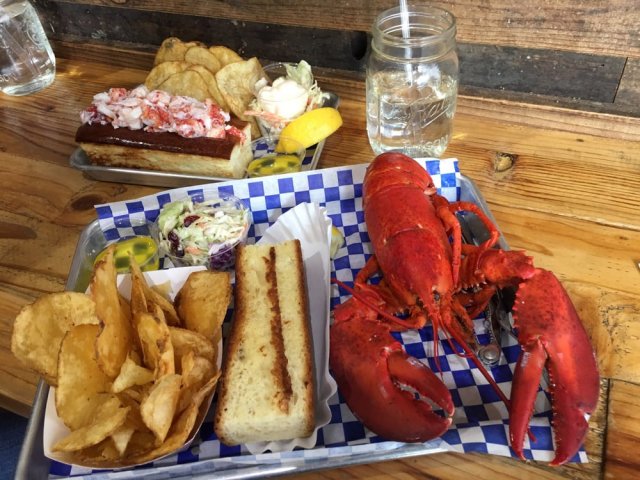New England lobster is a culinary treasure, celebrated for its sweet, succulent meat and iconic red shell. If you’re a seafood enthusiast seeking the ultimate gastronomic experience, look no further. From the quaint lobster shacks along the rugged coastline to upscale restaurants in bustling cities, the charm of New England lobster beckons. Let’s dive into the world of this revered crustacean, exploring its rich history, the art of cracking its shell, and the best ways to savor every delicious bite. Join us on a journey through the flavors and stories of New England lobster.
New England Lobster: A Delicious Dive into the World of Maine’s Favorite Crustacean
Welcome to the picturesque shores of New England, where the salty breeze mingles with the tantalizing aroma of freshly boiled lobster. In this blog post, we’ll take a deep dive into the world of New England lobster – a culinary treasure that has captured the hearts and taste buds of seafood lovers around the globe. From the crystal-clear waters of Maine to the bustling seafood markets of Boston, New England lobster is a symbol of tradition, excellence, and unforgettable flavors.
The Rich Heritage of New England Lobster
Before we embark on our savory journey through the world of New England lobster, let’s first explore the rich heritage and cultural significance of this iconic crustacean. For centuries, lobster fishing has been an integral part of New England’s maritime economy, with Maine emerging as the epicenter of lobster harvesting in the United States. The lobstering tradition has been passed down through generations of hardworking fishermen, who braved the rough Atlantic waters to bring back the bounty of the sea.
Today, lobster remains a staple of New England cuisine, gracing the tables of seaside restaurants and family gatherings alike. Whether enjoyed in a classic lobster roll, a decadent lobster bisque, or simply steamed with melted butter, New England lobster embodies the spirit of coastal living and culinary excellence.
The Science Behind New England Lobster
Now, let’s delve into the fascinating world of the New England lobster from a scientific perspective. The scientific name for the American lobster, which is commonly found in the waters off the New England coast, is Homarus americanus. These crustaceans are known for their distinctive appearance, with hard exoskeletons, ten legs, and powerful claws that they use for defense and capturing prey.
New England lobster are bottom-dwellers, preferring rocky crevices and sandy areas along the ocean floor. They are opportunistic feeders, scavenging for fish, crabs, and mollusks, as well as consuming plant matter. Lobsters grow by molting their exoskeletons, shedding the old shell and forming a new, larger one in its place. This growth process continues throughout their lifespan, with older lobsters boasting some of the largest claws and bodies.
The Culinary Delights of New England Lobster
Now, let’s turn our attention to the culinary delights of New England lobster that have made it a star in the world of seafood gastronomy. One of the most iconic ways to enjoy New England lobster is in the form of a lobster roll. This quintessential dish features succulent chunks of lobster meat, lightly dressed with mayonnaise, lemon juice, and seasonings, tucked into a buttery, toasted bun. The combination of sweet, tender lobster meat and crisp, buttery bread is a match made in culinary heaven.
For those looking for a more indulgent experience, lobster bisque is a luxurious option that showcases the rich, creamy flavors of lobster meat. This velvety soup, often enriched with sherry, cream, and aromatic spices, is a comforting treat that warms both body and soul. The depth of flavor in lobster bisque comes from simmering lobster shells and meat to extract every last bit of savory goodness.
The Sustainability of New England Lobster
As we savor the delectable flavors of New England lobster, it’s essential to consider the sustainability of this precious resource. Lobster populations along the New England coast have faced challenges in recent years due to environmental changes, overfishing, and habitat destruction. To protect the future of this iconic species, fishermen and conservationists have implemented sustainable lobster fishing practices.
One such practice is the use of lobster traps that allow undersized lobsters and egg-bearing females to be released back into the ocean, ensuring the health and vitality of the population. Additionally, efforts to reduce bycatch and minimize the impact of fishing gear on marine habitats are crucial steps in preserving the delicate balance of the marine ecosystem. By supporting sustainable lobster fishing practices, we can enjoy New England lobster for generations to come.
Exploring the Flavors of New England Lobster
From the sweet, succulent meat to the rich, briny broth, New England lobster offers a myriad of flavors and textures to delight the palate. The meat of the lobster tail is prized for its firm texture and sweet taste, while the claws provide a tender, buttery sensation with each bite. Whether steamed, boiled, grilled, or baked, lobster meat retains its natural sweetness and delicate flavor, making it a versatile ingredient in a wide range of dishes.
When it comes to seasoning and enhancing the natural flavors of New England lobster, simplicity is key. A drizzle of melted butter, a sprinkle of sea salt, and a squeeze of fresh lemon are all you need to elevate the taste of lobster to new heights. For those looking to experiment with different flavor profiles, herbs like tarragon, thyme, and parsley can add a fragrant, herbaceous note to lobster dishes.
Conclusion: Celebrating the Majesty of New England Lobster
As we conclude our flavorful exploration of New England lobster, let’s take a moment to celebrate the majesty of this beloved crustacean. From its humble origins on the ocean floor to its place on the plates of seafood aficionados worldwide, New England lobster embodies the spirit of tradition, sustainability, and culinary excellence. Whether enjoyed as a classic lobster roll by the seaside or as a decadent lobster bisque in the heart of the city, the flavors of New England lobster continue to captivate and inspire us.
So, the next time you find yourself on the shores of New England, be sure to savor a taste of this iconic crustacean and experience the true essence of coastal living. From the salty sea breeze to the buttery richness of a perfectly cooked lobster tail, New England lobster is a culinary experience like no other. Dive in and discover the magic of New England lobster – a treasure from the deep that will leave you craving more.
The Best Lobster Roll in New England is at McLoons Lobster Shack in South Thomaston, Maine
Frequently Asked Questions
What is the best way to prepare New England lobster?
The best way to prepare New England lobster is to steam or boil it to maintain its natural flavor and tenderness. Serve it with melted butter and lemon for a classic and delicious dish.
Where can I find fresh New England lobster?
You can find fresh New England lobster at local seafood markets, specialized seafood restaurants, or online seafood suppliers that ship directly from the East Coast.
Can I freeze fresh New England lobster?
Yes, you can freeze fresh New England lobster. To maintain its quality, remove the meat from the shell, store it in an airtight container or plastic bag, and freeze it for up to three months. Thaw the lobster in the refrigerator before using.
Final Thoughts
In conclusion, New England lobster is a beloved culinary treasure. Its sweet, succulent meat and rich flavor make it a sought-after delicacy. Whether enjoyed in a classic lobster roll or a decadent lobster bisque, this iconic seafood never disappoints. Don’t miss the opportunity to savor the taste of New England lobster for a truly unforgettable dining experience.




